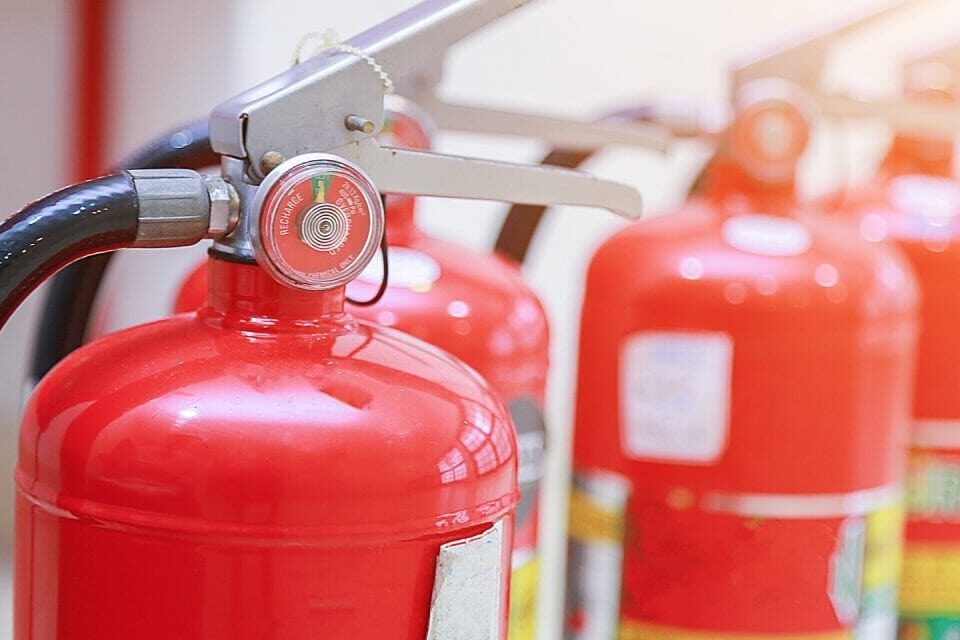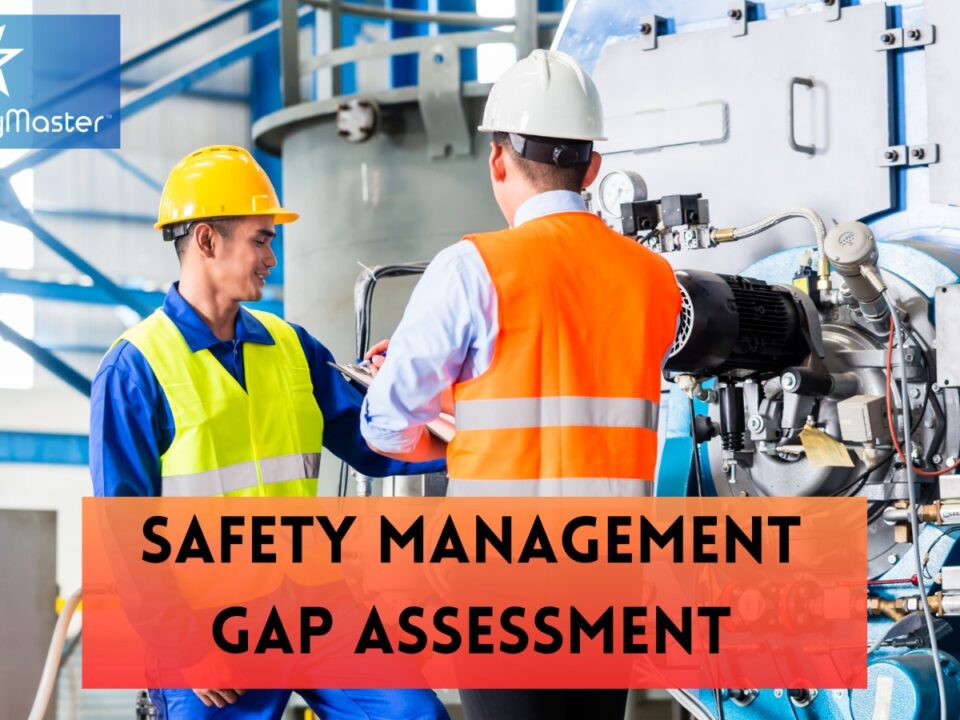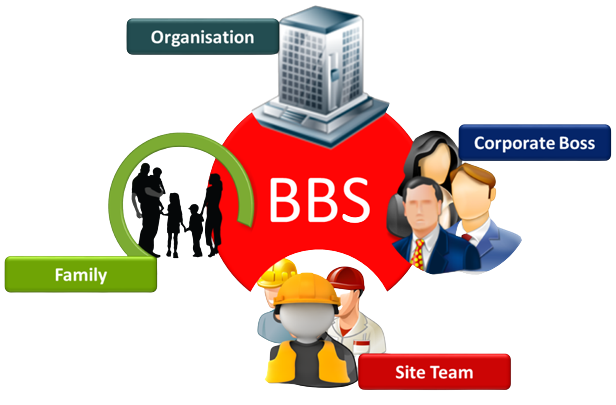Mastering the HIRA Method: A Comprehensive Study and Training Guide

How Process Hazard Analysis Plays a Crucial Role in the Indian Process Sector
October 19, 2023
The Safety Master: Pioneering Behavior-Based Safety Training
October 19, 2023In this article, we delve into the intricacies of the highly acclaimed HIRA method – an invaluable tool for individuals seeking to enhance their problem-solving skills, decision-making abilities, and overall productivity. Whether you’re a professional aiming to optimize team dynamics or an individual looking to navigate personal challenges with finesse, this comprehensive study and training guide is your roadmap to mastering the HIRA technique. Join us as we unravel the secrets behind this transformative methodology, empowering you to unlock new levels of success and deliver exceptional results. Prepare to embark on a journey of growth and achievement like no other.
Introduction
Working towards excellence in any field requires a deep understanding of the subject matter and a comprehensive approach to training. In today’s fast-paced and ever-evolving world, it is crucial for professionals to stay ahead of the curve and continuously enhance their skills. This is especially true when it comes to risk management, where organizations need robust methodologies to identify, assess, and mitigate potential risks effectively. In this article, we delve into the intricacies of mastering the HIRA Method – an indispensable tool for risk management enthusiasts. Whether you are an aspiring risk manager or an experienced professional looking to expand your knowledge, this comprehensive study and training guide will equip you with the necessary insights and practical techniques to excel in implementing the HIRA Method
Understanding the HIRA Method
Understanding the HIRA Method: Deeply comprehending the intricacies of the HIRA (Hazard Identification and Risk Assessment) Method is pivotal in developing a robust risk management strategy. This methodological approach enables individuals and organizations to systematically identify, analyze, and mitigate potential hazards and risks. By thoroughly understanding the HIRA Method, one gains an invaluable toolset to enhance safety measures, safeguard lives, protect assets, and uphold a culture of proactive risk management.
Delving into the core principles underlying the HIRA Method reveals its remarkable efficacy. It operates on a foundation of meticulous hazard identification coupled with a comprehensive assessment of associated risks. This systematic process empowers individuals to not only recognize obvious dangers but also unveil hidden hazards that may have eluded conventional risk assessment approaches. By adopting this method, decision-makers can take informed actions to minimize potential threats and optimize preparedness while fostering a secure environment for all stakeholders involved
Historical Background of the HIRA Method
In delving into the historical background of the HIRA method, we are transported to the cradle of its inception. Originating from ancient wisdom passed down through generations, this method can be traced back to enlightened sages who sought to navigate the intricacies of life itself. With a profound understanding that risk is an inherent aspect of existence, these wise individuals crafted a comprehensive framework to identify, analyze, and manage risks effectively. Immersed in ancient texts and philosophical traditions, the HIRA method draws inspiration from various cultures and civilizations. It encompasses principles from Greek philosophy’s pursuit of knowledge and balance, as well as Eastern philosophies’ harmonious approach to life’s enigmas. This historical amalgamation infuses the HIRA method with a timeless essence—its roots firmly grounded in enduring wisdom throughout millennia.
With each passing era, the HIRA method evolved and adapted to address new challenges brought forth by societal advancements. From ancient civilizations managing unpredictable climate patterns to modern organizations navigating rapidly changing market dynamics—the underlying principles have remained steadfast while accommodating contemporary complexities. By embracing history’s valuable lessons, we unlock a wealth of insights that empower us on our journey towards mastering the transformative potential of the HIRA method.
By connecting with the rich historical tapestry woven into every fiber of this methodology’s existence, we strengthen our resolve in embracing its power. Through understanding its roots deeply embedded in human civilization’s collective growth and wisdom accumulation, we embark on a path towards harnessing risk for our betterment—striding confidently towards a future where uncertainty no longer intimidates but rather fuels our progress toward success.
Benefits of Mastering the HIRA Method
In embarking on the journey of mastering the HIRA Method, individuals open themselves up to a plethora of remarkable benefits. Firstly, this comprehensive approach equips practitioners with the ability to assess and mitigate risks in a systematic manner, ensuring the safety and security of not only themselves but also those around them. By cultivating a deep understanding of risk management principles, professionals become adept at identifying potential hazards and developing effective strategies to minimize their impact. Moreover, mastering the HIRA Method fosters an environment of proactive thinking and problem-solving. As practitioners delve into the intricacies of this methodology, they learn to anticipate risks before they materialize, allowing for swift and pre-emptive action. This heightened awareness cultivates a sense of preparedness that permeates every aspect of one’s professional life.
Lastly, by investing time and effort into becoming proficient in the HIRA Method, individuals position themselves as valuable assets in any organization or industry. Organizations are increasingly prioritizing risk management as an integral part of their operations. Therefore, individuals who possess expertise in this area find themselves in high demand across various sectors. The mastery achieved through diligent study confers upon practitioners a sense of confidence and empowers them to contribute meaningfully to their respective fields.
By embracing the journey towards mastering the HIRA Method, individuals not only enhance their personal skill set but also elevate their professional prospects while actively promoting safer systems and environments for all stakeholders involved.
Key Components of the HIRA Method
Key Components of the HIRA Method: A. Hazards Identification:
In this crucial component, HIRA focuses on identifying and analyzing potential hazards that may pose risks to a system, project, or organization. A systematic approach is employed to identify a wide array of threats, ranging from natural disasters to technological failures. By meticulously assessing the probability and severity of each hazard, organizations can gain comprehensive insights into their vulnerability and establish strategies to mitigate risks effectively.
B. Risk Assessment:
Once hazards are identified, it is essential to assess the associated risks in order to prioritize actions and allocate resources appropriately. The risk assessment component of HIRA involves evaluating the likelihood of specific hazards occurring and estimating their potential impact on various aspects such as safety, environment, economy, reputation, or public health. This process provides organizations with a quantified understanding of risks and aids in developing targeted risk management plans.
C. Risk Control:
Following risk assessment, the HIRA method emphasizes proactive risk control measures aimed at minimizing or eliminating identified risks altogether. This component focuses on implementing preventive actions that reduce the probability or severity of hazards occurring as well as establishing effective emergency response plans for incidents that cannot be completely eliminated. By fostering a culture of safety consciousness and continuous improvement within an organization, risk control measures significantly enhance resilience.
D. Communication and Training:
Effective communication forms an integral part of any successful risk management strategy. The HIRA method recognizes the importance of clear and timely information exchange across all levels within an organization as well as with external stakeholders such as regulatory authorities or local communities. Furthermore, comprehensive training programs help equip individuals at all levels with the necessary knowledge and skills to understand risks, implement control measures effectively, respond efficiently during emergencies, and contribute actively towards creating a safer environment for all
Step-by-Step Guide to Implementing the HIRA Method
Step-by-Step Guide to Implementing the HIRA Method: Begin your journey towards mastering the HIRA Method with a clear understanding of its core principles. Central to this process is the identification and assessment of hazards, risks, and vulnerabilities in a systematic manner. By following these steps diligently, you can ensure a comprehensive approach to risk management that leaves no stone unturned.
1. Establish a strong foundation: Start by assembling a multidisciplinary team that includes individuals with diverse expertise and perspectives. This collective wisdom will enhance the accuracy and effectiveness of your risk assessments. Remember to define your objectives clearly and communicate them transparently to all involved parties.
2. Identify hazards: Begin by conducting thorough research on potential hazards within your specific context. Consider natural disasters, technological failures, human error, or any other factors that could negatively impact your operations or environment.
3. Assess risks: Once you have identified potential hazards, proceed with assessing the likelihood and consequences of their occurrence. Utilize reliable data sources, expert opinions, historical records, and any other relevant information to evaluate each risk comprehensively.
4. Analyze vulnerabilities: In this step, scrutinize your existing systems and processes for weaknesses that may exacerbate the impact of identified risks. Look out for gaps in infrastructure, resource limitations, human error possibilities, or any other vulnerabilities that could compromise safety or security.
5. Develop mitigation strategies: Armed with a holistic understanding of both risks and vulnerabilities at hand, devise effective strategies to reduce or eliminate them altogether. Implement preventive measures such as strengthening infrastructure resilience or improving employee training programs to minimize potential harm.
6. Monitor and review: Risk management is an ongoing process; it requires constant monitoring and periodic review of implemented strategies’ effectiveness
Case Studies: Real-Life Examples of Successful HIRA Implementations
Case Studies: Real-Life Examples of Successful HIRA Implementations – In one notable case study, a multinational manufacturing company implemented the HIRA Method across its production facilities, resulting in a significant reduction in workplace accidents. By conducting thorough hazard identification and risk assessment, they identified potential dangers associated with machine operations. They then implemented effective control measures, including enhanced safety protocols and improved training programs for employees. As a result, the company achieved a remarkable 70% decrease in workplace accidents over a two-year period.
Another inspiring example comes from the construction industry, where a leading firm embraced the HIRA Method to enhance safety practices on their job sites. By meticulously analyzing potential hazards and assessing risks associated with each task, they were able to identify critical areas that required immediate attention. Through proactive measures such as implementing stricter safety protocols, providing comprehensive employee training, and ensuring regular equipment maintenance, this company saw an impressive 50% decrease in incidents within just six months.
These case studies demonstrate the transformative power of the HIRA Method when applied diligently and consistently within real-world environments. They highlight not only the tangible benefits of reduced accidents but also the positive impact on employee morale and overall productivity. These success stories serve as powerful reminders that investing time and resources into mastering the HIRA Method can yield substantial rewards by creating safer work environments for all involved.
Common Challenges in Training for the HIRA Method
Common Challenges in Training for the HIRA Method: One of the prominent challenges encountered during HIRA training is the complexity of risk assessment. As trainees delve into analyzing hazards, identifying risks, and assessing their potential consequences, they may find themselves grappling with intricate scenarios and conflicting information. However, this challenge can be embraced as an opportunity for growth, encouraging learners to think critically and develop analytical skills that are essential for effective risk management.
Another hurdle lies in cultivating a proactive mindset among trainees. The HIRA Method emphasizes pre-emptive risk identification and mitigation rather than simply reacting to incidents after they occur. Encouraging individuals to shift their focus from firefighting to proactive hazard recognition requires a cultural shift within organizations. By promoting a positive narrative around risk management, highlighting success stories of early intervention, and fostering a supportive learning environment, trainers can inspire trainees to embrace this mindset shift.
Moreover, ensuring consistent implementation of the HIRA Method across different teams and departments poses its own set of challenges. Organizations often struggle with aligning diverse perspectives and approaches towards risk assessment. This challenge calls for effective communication strategies and collaboration between stakeholders at all levels. By emphasizing shared goals, promoting cross-functional knowledge sharing sessions, and providing ongoing support during implementation phases, organizations can promote a harmonized approach towards mastering the HIRA Method.
In conclusion, while there are challenges in training for the HIRA Method including complexity in risk assessment, fostering a proactive mindset among trainees, and ensuring consistent implementation across teams; these obstacles present opportunities for growth and improvement. By addressing these challenges through critical thinking exercises, cultural shifts towards proactive hazard recognition, and fostering collaboration amongst stakeholders; organizations can successfully navigate these obstacles on their journey towards mastering the HIRA Method
Best Practices for Training and Mastering the HIRA Method
Best Practices for Training and Mastering the HIRA Method: In order to effectively train and master the HIRA Method, it is crucial to adhere to a set of best practices that maximize learning outcomes and ensure practical application. Firstly, establishing a supportive learning environment where participants feel comfortable to ask questions and engage in discussions fosters a deeper understanding of the method’s principles. Encouraging active participation through group activities and case studies helps solidify knowledge while promoting collaboration amongst trainees.
Additionally, incorporating hands-on exercises that simulate real-life scenarios allows learners to apply the HIRA Method in a controlled environment. This immersive approach enhances decision-making skills and builds confidence in handling risk assessments. Moreover, providing continuous feedback throughout the training process reinforces positive learning behaviors and enables trainees to identify areas for improvement.
Lastly, reinforcing a culture of continuous learning beyond the initial training sessions is essential for mastering the HIRA Method. Encouraging individuals to seek ongoing professional development opportunities, such as attending workshops or joining industry forums, ensures they stay up-to-date with emerging trends and best practices. By fostering this commitment to lifelong learning, organizations can cultivate a pool of experts who are adept at applying the HIRA Method across various domains.
Remember: Success in mastering the HIRA Method lies not only in theoretical knowledge but also in its practical implementation through effective training strategies. By adopting these best practices, organizations can empower their workforce with invaluable skills that lead to enhanced risk management capabilities – paving the way for success in an ever-evolving world.
Assessing Competency in the HIRA Method
Assessing Competency in the HIRA Method: Determining proficiency in the HIRA Method is crucial for organizations to ensure a high standard of risk assessment and management. Several strategies can be employed to evaluate competency in this vital skillset. One effective approach is conducting practical simulations, where individuals are presented with real-world scenarios and evaluated on their ability to identify hazards, assess risks, and propose appropriate control measures. These simulations can be conducted individually or as part of a team exercise, providing a comprehensive assessment of an individual’s competence in applying the HIRA Method.
In addition to simulations, written assessments can also be utilized to gauge an individual’s theoretical knowledge of the HIRA Method. These assessments typically include multiple-choice questions, short answer prompts, and case studies that require candidates to analyze complex risk scenarios. By evaluating their understanding of key concepts, principles, and methodologies associated with the HIRA Method, these assessments provide valuable insights into an individual’s level of expertise.
Furthermore, incorporating peer reviews and mentorship programs into the assessment process can enhance learning and foster continuous improvement among practitioners. Peer reviews encourage collaboration and knowledge sharing within teams while allowing individuals to receive constructive feedback from their peers. Similarly, mentorship programs provide experienced professionals with opportunities to guide and support less-experienced practitioners as they develop their skills in the HIRA Method.
By employing a combination of practical simulations, written assessments, peer reviews, and mentorship programs, organizations can effectively assess competency in the HIRA method. This holistic approach not only ensures that individuals possess the necessary skills but also promotes a culture of continuous learning and improvement within an organization’s risk management framework
Resources and Tools for Effective HIRA Training
Resources and Tools for Effective HIRA Training: To truly excel in mastering the HIRA method, one must be equipped with a wide array of resources and tools that facilitate effective training. Fortunately, the digital era has blessed us with an abundance of valuable assets to aid in this journey. Online platforms such as e-learning modules, webinars, and virtual classrooms offer interactive and engaging experiences that bring the HIRA methodology to life. These resources enable learners to grasp complex concepts through immersive visuals, vivid simulations, and interactive quizzes.
Additionally, books and publications dedicated to the HIRA method serve as invaluable references for both beginners and seasoned practitioners. They delve into profound aspects of risk assessment, providing in-depth explanations of various techniques while offering practical examples from real-world scenarios. These comprehensive guides not only equip individuals with knowledge but also ignite their passion for exploring new frontiers within risk analysis.
Furthermore, networking opportunities play a crucial role in advancing one’s expertise in the HIRA method. Attending conferences or joining professional organizations allows individuals to connect with like-minded individuals who are equally passionate about risk assessment. Engaging in fruitful discussions, sharing experiences, and seeking guidance from industry experts enriches the learning process while fostering a sense of community within this specialized field.
By harnessing these resources and tools at our disposal, we can embark on our journey towards mastering the HIRA method with confidence and enthusiasm. With dedication and a thirst for knowledge, we can navigate through any challenge that comes our way while continually expanding our understanding of risk evaluation techniques. The path may be demanding at times, but the rewards are immeasurable – enabling us to safeguard lives, protect assets, and build a safer world for future generations.
Conclusion
In culmination, after delving into the intricacies of the HIRA Method, it becomes abundantly clear that this comprehensive study and training guide holds immense value for individuals and organizations seeking to enhance their risk management capabilities. By mastering the HIRA Method, one unlocks a powerful framework for identifying hazards, assessing risks, and implementing effective control measures. With diligent practice and commitment to continuous improvement, practitioners can navigate any challenge with confidence and resilience, ensuring a safer and more secure future for all. Embrace the HIRA Method as your guiding light on the path towards risk mastery.




